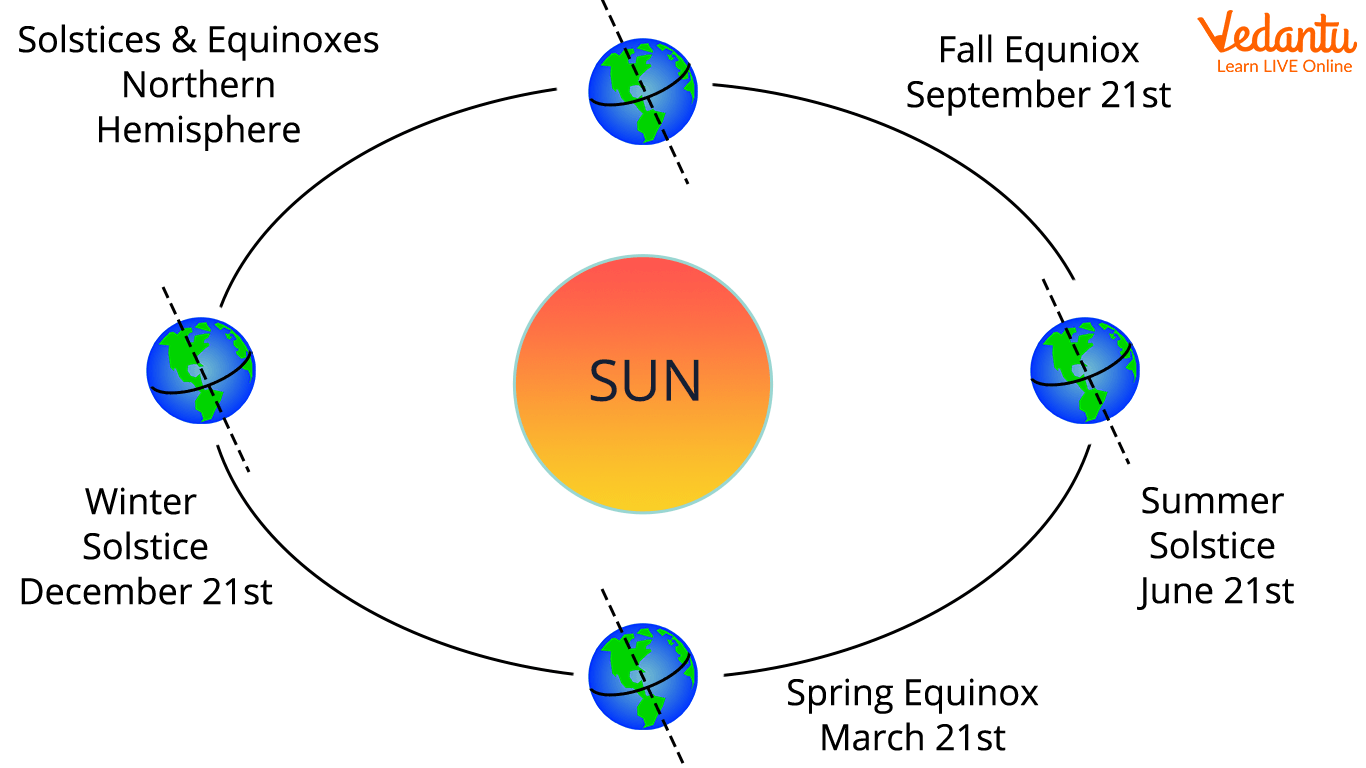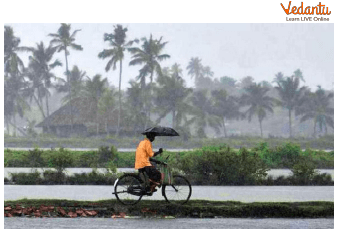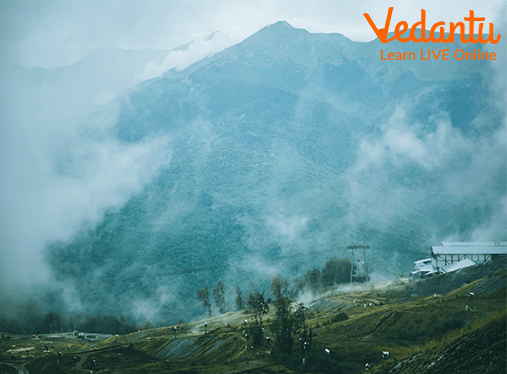




Seasons for Kids
What is Season? As the year passes, there are regular changes in the weather. This cycle of change of weather is divided into four parts, which are called seasons. The four seasons are winter, spring, summer and autumn.
Summer and winter are the two most important seasons for students. These are the season's names you hear at the time of your holidays in school. We always wait for the summer and winter holidays in our school. Summer is the hottest season of the year, and winter is the coldest season of the year. Winter comes from an Old Germanic word meaning "time to water." It refers to the winter rain and snow.
The monsoon type of climate is found in India. The word monsoon is derived from the Arabic word Mausim, which means 'seasonal change in wind direction'. The weather or season of India is influenced by two types of winds – the winds coming from the Arabian Sea and the winds coming from the Bay of Bengal. The Indian Meteorological Department has divided the climate of India into the following four seasons – Winter, Summer, Monsoon and Autumn.

The Season Diagram.
How Many Seasons in the World?
There are four main types of seasons in the world. The names of these seasons(four season name) are:
Rainy Season
Summer Season
Autumn Season
Winter Season
1. Autumn Season:
Autumn follows the rainy season starting from October and lasts till the beginning of December. It is often referred to as the 'Retreating Season' of the Southwest Monsoon due to its gradual withdrawal from India. Northern India does not receive rainfall during this season, but several cyclones occur in the Bay of Bengal, which moves from northwest to northeast along the east coast and brings rain over the Tamil Nadu coast and Sri Lanka.

Autumn Season.
2. Summer Season:
The summer season starts in March and lasts till June-July. At this time, due to the 'Summer Solstice', the whole of India experiences a temperature rise. In this season, extremely hot winds blow during the day in the north and north-west part of India, which is called 'Loo'. In this season the Sun turns north and the Inter-Tropical Convergence Zone (ITCZ) starts moving northwards and becomes situated above 250 North latitude in July.
During this season, when the warm and dry air of the land meets the moist winds of the sea, then cyclones are formed in that area. These cyclones are called pre-monsoon cyclones. These are extremely strong winds that bring heavy rain and hailstorms.

Summer Season.
3. Winter Season:
The winter season starts in mid-November in northern India and lasts till February. In winter, the temperature starts decreasing as the temperature increases from south to north. The average temperature in this season ranges from 24° to 25° C on the east coast while it ranges from 10°–15° C in the plains of the north. The days are relatively warm and the nights relatively cool. Fog in the northern areas and snowfall on the upper slopes of the Himalayas is common in winter.

Winter Season.
4. Rainy Season:
The rainy season starts in mid-June and lasts till September, and the rainfall during this season is related to the entry of the South-West monsoon into India. During this season, a low-pressure area is formed over the northern plains, attracting the southern hemisphere's trade winds. The southeast trade winds of the Southern Hemisphere cross the equator and blow in south-westerly direction to enter the Indian peninsula as the Southwest Monsoon.
With the arrival of the South-West monsoon in India, there is a complete change in the weather. Mawsynram, the southern range of the Khasi Hills, has the highest average rainfall in the world.

Rainy Season.
Solved Questions
1. Which season starts in mid-June and lasts till September?
Ans: The rainy season starts in mid-June and lasts till September.
2. Which season comes before the winter season?
Ans: The autumn season comes before the winter season.
3. Which place receives the highest rainfall in India?
Ans: Mawsynram is the place with the highest rainfall in India.

Mawsynram: Place of Highest Rainfall in India.
Learning by Doing
Write True or False.
The Indian Meteorological Department has divided the climate of India into eight seasons.
The word monsoon is derived from the Latin word Mausam.
Mawsynram has the highest rainfall in India.
The summer season starts in March and lasts till June-July.
Summary
The monsoon type of climate is found in India. The word monsoon is derived from the Arabic word Mausim, which means 'seasonal change in wind direction'. The season is the condition of the atmosphere at a particular place and at a particular time.
The Indian Meteorological Department has divided the climate of India into four seasons, and they are summer, autumn, monsoon and winter. We also talked about the characteristics of each of them and their behaviour.
FAQs on Seasons Definition for Kids
1. What is a season in simple words for kids?
A season is a part of the year that has its own special kind of weather. The year is divided into different periods, and each one, like summer or winter, feels different outside. These changes happen in a cycle every year.
2. What are the main seasons for kids to learn about?
For kids, it's easy to learn about the main seasons that we experience. These are:
- Summer: The hot and sunny season when we enjoy ice cream and swimming.
- Monsoon: The rainy season, perfect for splashing in puddles with raincoats.
- Autumn: The season when leaves change colour and fall from the trees.
- Winter: The cold season when we wear warm sweaters and drink hot chocolate.
- Spring: The beautiful season when flowers bloom and new leaves appear.
3. How do seasons change?
Seasons change because our planet, Earth, is tilted as it travels around the sun. When the part of the Earth where we live is tilted towards the sun, we get more direct sunlight and it becomes summer. When it's tilted away from the sun, we get less direct sunlight, and it becomes winter.
4. Why is it important for us to know about different seasons?
Understanding seasons is very important for our daily lives. It helps us decide what clothes to wear to stay comfortable, like light cottons in summer and warm woollens in winter. It also tells farmers the right time to plant certain crops and helps us prepare for different weather conditions like rain or heat.
5. What is the main difference between the summer and winter seasons?
The biggest difference is the temperature and amount of daylight. In summer, the weather is hot, days are very long, and the sun feels strong. In winter, the weather is cold, days are shorter, and we see less of the sun, making it feel less warm.
6. Which season is often called the 'queen of all seasons' and why?
The spring season is often called the 'queen of all seasons'. This is because the weather is perfectly pleasant—it's neither too hot nor too cold. During spring, nature looks its most beautiful with colourful flowers blooming, new leaves growing on trees, and birds chirping happily.
7. Do all places on Earth have the same four seasons at the same time?
No, they do not. Because of the Earth's tilt, when one half of the world (a hemisphere) is having summer, the other half is having winter. Also, places very close to the Earth's middle line, the equator, do not experience four distinct seasons; they usually have warm, wet, or dry weather all year round.





















